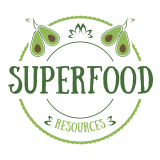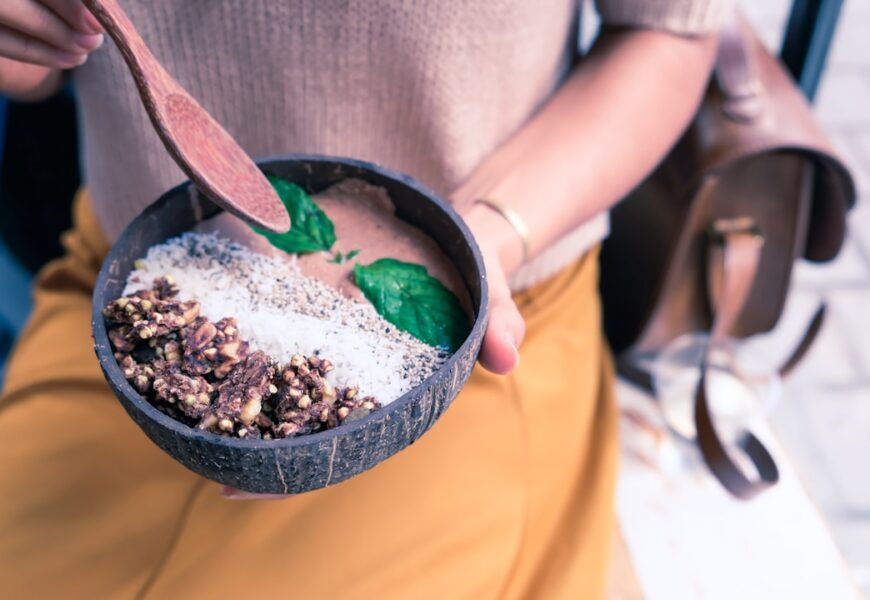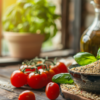Top Ways to Grow Your Own Superfoods at Home
Introduction
Welcome to the world of home gardening, where not only can you beautify your surroundings, but you can also boost your health by growing your own superfoods! From leafy greens to berries, these nutrient powerhouses are key to a healthier diet and lifestyle. Imagine stepping outside to gather ingredients for your morning smoothie or dinner salad, fresh from the earth. Join us as we explore simple and effective methods to cultivate these vibrant life enhancers right in your backyard!
Benefits of Growing Superfoods at Home
Growing superfoods at home is not only a satisfying hobby but also a significant step towards leading a healthier lifestyle. Packed with vitamins, minerals, and antioxidants, these nutrient-rich foods can play a crucial role in improving your diet and overall health. Additionally, cultivating your own produce ensures that you have the freshest ingredients available, free from harmful chemicals and pesticides often used in mass agricultural practices.
Nutrient Density of Superfoods
Superfoods are renowned for their high nutrient density, meaning they contain large amounts of vitamins and minerals relative to their calorie content. By growing superfoods like kale, berries, and quinoa in your garden, you can harness these nutritional powerhouses right at your doorstep. The advantage here is two-fold — you get to enjoy fresher, more flavorful produce, which often retains more nutrients than their store-bought counterparts, and you have the assurance that your food is grown in a healthy, natural way.
Cost-Effectiveness of Growing Your Own
Beyond the incredible health benefits, growing your own superfoods can be highly cost-effective. Many superfoods, while nutrient-dense, come with a high price tag when purchased at the store, particularly if they are organic or imported. By planting your own, you substantially cut down on food expenses and reduce food waste, as you can harvest only what you need. This sustainable approach not only benefits your wallet but also the environment.
Planning Your Superfood Garden
Before you begin planting, it’s essential to plan your superfood garden carefully to maximize your success and yield. This involves choosing which superfoods to grow, determining the best location for your garden, and planning for different growing seasons.
Selecting Superfoods to Grow
Choosing the right superfoods for your garden depends on several factors including taste preferences, local climate, and the amount of space available. Some popular superfoods that are generally easy to grow include:
– Kale: Thrives in cool environments and can be harvested multiple times.
– Blueberries: Require acidic soil but provide years of fruitful harvest once established.
– Sweet potatoes: Versatile and rich in vitamins, growing best in warm climates.
– Spinach: A fast-growing leafy green, perfect for cooler climates.
Evaluate what superfoods will thrive in your region and align with your dietary needs.
Choosing the Right Location for Your Garden
The location of your garden significantly influences the growth and health of your plants. Superfoods require ample sunlight, good soil, and proper drainage to thrive. Choose a spot that receives at least six hours of direct sunlight per day and is protected from harsh wind. If soil quality is poor, consider raising beds or large containers to better control the soil quality. Ensure there is a water source nearby, as consistent moisture is crucial for most superfoods.
Planning for Seasonality
Understanding the seasonal requirements of your chosen superfoods is crucial for ensuring a year-round supply. Some plants may be more sensitive to temperature changes and require specific planting times:
– Spring: Ideal for starting most leafy greens which can’t tolerate the summer heat.
– Summer: Best for heat-loving plants like tomatoes and peppers.
– Fall: Good for planting perennials like asparagus and rhubarb, which will provide harvests in future years.
Incorporate a mix of perennials and annuals to maintain diversity and continual harvest throughout the year. Planning your planting schedule will keep your garden productive and your kitchen stocked with fresh superfoods across all seasons.
Methods for Growing Superfoods

Container Gardaning
Container gardening is an excellent way for individuals with limited space to grow their own superfoods. This method involves planting seeds or young plants in containers like pots, buckets, or even specialized planters. It’s particularly an accessible option for urban dwellers looking to cultivate nutritious food like blueberries, kale, and spinach. To get started, choose containers with good drainage and fill them with a high-quality potting mix. Position your containers in an area that receives adequate sunlight based on the needs of your specific plants, which is typically around six to eight hours a day for most superfoods.
Raised Bed Gardening
Raised bed gardening allows better control over the soil quality and can thus support healthier plant growth, particularly for root-based superfoods like carrots and beets. Constructed above ground level, these beds can be filled with a mix of compost, gardening soil, and other organic matter, creating an optimum environment for your superfoods. Not only do raised beds safeguard against soil compaction, but they also improve drainage and reduce the extent of weeding and bending over, making them ideal for easy harvesting. They are versatile enough to fit into various small or large spaces, enhancing accessibility and yield.
Hydroponic Systems
For those interested in a more modern approach, hydroponic systems allow superfoods to thrive in a water-based solution, rich in essential nutrients, without the use of soil. This method is great for growing leafy greens such as spinach and herbs like basil inside your home year-round. Hydroponics systems can range from simple setups, such as nutrient film techniques, to more advanced drip or aeroponic systems. One of the primary advantages of hydroponic farming is faster plant growth and the possibility of higher yields, provided the right nutrient balance and pH levels are maintained.
Tips for Success
Soil Preparation and Fertilization
Successful gardening starts with the soil. For superfoods, it’s vital to begin with a nutrient-rich base. Whether you’re using containers, raised beds, or traditional garden plots, enriching your soil with compost and well-rotted manure will provide the essential nutrients these power-packed plants need. Additionally, testing your soil occasionally helps in identifying the specific nutrients lacking and allows you to tailor your fertilization practices accordingly. The use of organic fertilizers like fish emulsion or seaweed extract not only supports healthy growth but also enhances the flavor of your superfoods.
Watering and Maintenance
Regular and consistent watering is key to successful home gardening. Superfoods need water to facilitate nutrient uptake and prevent stress that can lead to poor growth or reduced nutritional quality. Implement a watering routine early in the morning or late in the afternoon to minimize evaporation and ensure deep soil saturation. For maintenance, mulching around your plants will help conserve moisture, suppress weeds, and keep roots cool during warmer months. Regularly check your plants for growth issues and prune any diseased or overgrown limbs to promote air circulation and light exposure.
Pest Control Strategies
Pests can be a major challenge when growing superfoods, but there are several effective organic strategies to manage them. Introducing beneficial insects like ladybugs and lacewings can naturally reduce the population of harmful pests. Additionally, barriers such as row covers or plant collars can physically protect your plants from insects and small critters. For fungal infections, avoid overhead watering to keep the foliage dry and create less inviting conditions for fungal growth. If pests persist, organic pesticides such as neem oil can be applied sparingly to affected areas, always ensuring to follow the recommended guidelines for safe application.
Harvesting and Using Your Superfoods

Knowing When to Harvest
Harvesting your superfoods at the right time is crucial to maximize their nutritional benefits and taste. Each plant has its own perfect picking time. Leafy greens, such as kale and spinach, are best harvested early in the morning when their moisture levels are highest; wait until they are hearty in size but not overly mature to avoid toughness. Berries come off the bush easily when they are ripe and have a deep, vibrant color. For root vegetables like carrots and beets, check their size; they should be firm and brightly colored. Generally, tasting a small part before fully harvesting can be a good indicator of ripeness.
Creative Ways to Incorporate Superfoods into Your Meals
Adding superfoods to your diet doesn’t have to be a chore or disrupt your regular meal planning. With a bit of creativity, you can enhance the nutritional value of every meal effortlessly. Here are some simple ideas:
– Smoothies: Blend kale, spinach, or beet greens with fruits like berries and bananas for a nutritious breakfast or snack.
– Salads: Toss together fresh greens, sliced avocados, nuts, and your home-grown berries for a refreshing lunch.
– Soups: Stir spinach or kale into soups and stews just before serving to preserve their nutrients and color.
– Snacks: Snack on raw, sliced carrots and beets or create your own trail mix with dried berries and nuts.
These simple integrations not only increase your nutrient intake but also let you enjoy the fruits of your gardening labor in delicious and diverse ways.
Conclusion
Growing your own superfoods at home is an empowering step towards a healthier diet and a sustainable lifestyle. Not only does it allow you to control what goes into your food in terms of chemicals and pesticides, but it also ensures that you get the freshest produce possible. By following the methods discussed, you can enjoy a variety of nutrient-packed foods right from your garden. Remember, the key to successful home gardening is patience, care, and a bit of experimentation. So, get your gardening tools ready, and start your journey to healthier eating today!










